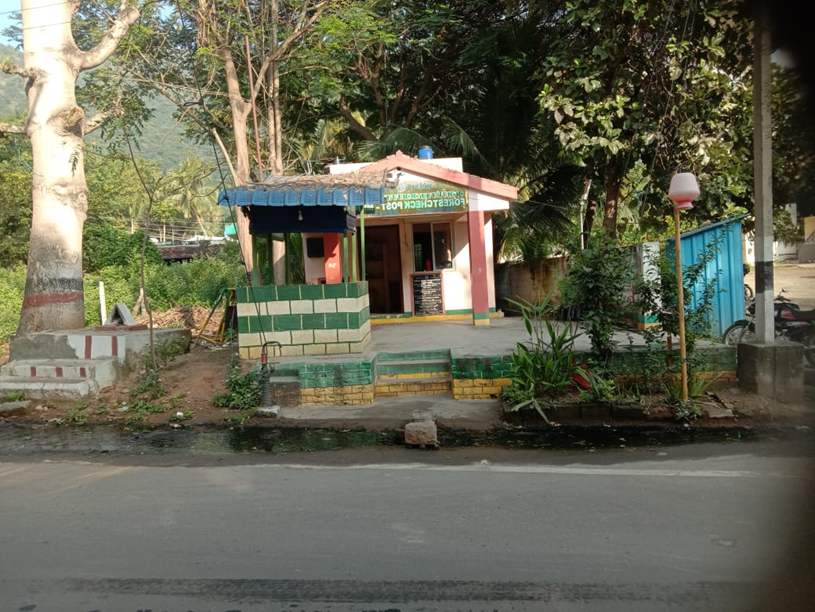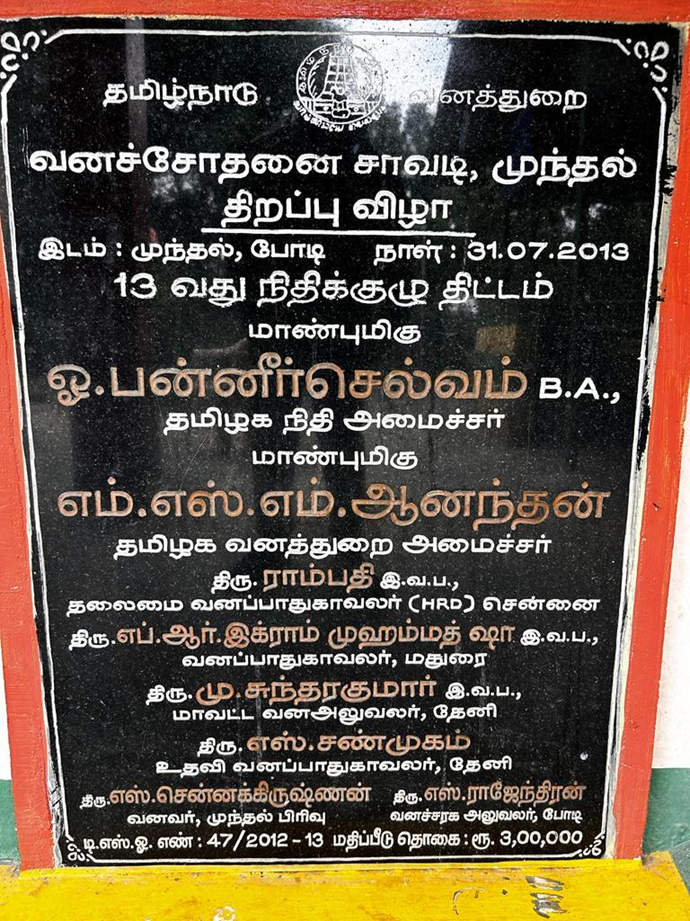In
the heart of the Western Ghats, nestled among gigantic trees and luxuriant vegetation,
lies a hidden world of intricate relationships and delicate balances. It is
here that I, a humble forester, discovered the profound significance of
keystone* species, the uncelebrated heroes of our forest ecosystems. During my
tenure in the Social Forestry wing, the term "keystone species"
occasionally crossed my path, but it failed to spark my curiosity. However,
upon my transfer to the Territorial wing and subsequent postings in the Western
and Eastern Ghats, my eyes were opened to the remarkable impact these species
can have on the entire system.
INDIAN
VULTURE (Indian Long Billed Vulture)
Another
keystone species that captured my attention is the Indian vulture, a magnificent
bird that performs the vital task of scavenging carcasses. In my native village
near Tirunelveli, the sight of 15-20 vultures congregating near the
slaughtering house was a familiar one during my youth. These majestic birds,
with their imposing height of up to three feet and striking appearance,
instilled a sense of awe and trepidation in me as I ventured along the path
where they feasted on the remains of slaughtered buffalo or beef. By consuming dead animals, vultures prevent
the spread of diseases and maintain the health of the entire ecosystem. While
the population of Vultures swindles for varying reason, the eco system
disturbed considerably. I continued my exploration,
I encountered numerous other keystone species, each with its own unique
contribution to the intricate web of life.
FICUS
RACEMOSA
Ficus
species produce fleshy attractive fruits for the dispersal mainly through bats
and birds. The Ficus fruits are also eaten by the Three-striped palm squirrel,
Malabar giant squirrel, Grizzled giant squirrel, Palm civet etc. Seeds of Ficus species were noticed in the
pellets of the Deer, bear and scats of civets.
Ripe fruits fallen in the ground might have been consumed up by the
terrestrial mammals.
LION
TAILED MACAQUE IN THE UPPER CANOPY
The Western Ghats, particularly in Kalakad Mundanthurai Tiger Reserve (KMTR), ishome to the fascinating Cullenia exallirata, a species with a unique flowering pattern that attracts a diverse array of wildlife. During the dry season, when fruits are scarce, Culleniaexallirata becomes a crucial food source for several species, including the Lion-tailed macaque, Nilgiri langur, Malabar Giant squirrel, and various species of birds. Additionally, the night time activity around the Cullenia exallirata flowers reveals a whole new world of nocturnal visitors, including bats, flying squirrels, spiny dormice, and brown palm civets. Understanding the interactions between this keystone species and the wildlife it supports is essential for conservation efforts in the Western Ghats
Another keystone species among mammals is the mighty elephant. As one of the largest herbivores on the planet, elephants consume a staggering amount of food, averaging up to 150 kilograms daily. This prodigious appetite results in the excretion of nearly 100 kilograms of dung per day, which plays a vital role in nutrient recycling and maintaining soil fertility. Elephants also cover vast distances, ranging up to 125 square miles during their daily or seasonal movements. This wide-ranging behaviour facilitates seed dispersal, as the seeds consumed by elephants pass through their digestive system and are deposited in new locations, contributing to the genetic diversity and resilience of plant populations. Additionally, elephants act as ecosystem engineers by creating and modifying their environment. They use their trunks to dig water holes, which become essential sources of water for other animals during the dry season. Elephants also clear vegetation by knocking down trees and shrubs, creating open areas that can be utilized by a variety of species for grazing, nesting, or hunting. However, the survival and well-being of elephants are under threat from habitat loss, poaching, and human-elephant conflicts. The decline of elephant populations has far-reaching consequences, not only for the elephants themselves but also for the entire ecosystem in which they play a pivotal role. Recognizing the significance of elephants as keystone species is crucial for the conservation and management of their habitats and populations. By protecting elephants, we safeguard the integrity and resilience of the ecosystems they inhabit, ensuring the survival of numerous other species and the overall health of our planet.
From keystone predators that
regulate prey populations to keystone herbivores that shape vegetation, these
species are the foundation upon which our forests thrive. The realization of
the importance of keystone species has profoundly impacted my perspective as a
forester. It has instilled in me a deep sense of responsibility to protect and
preserve these unsung heroes of our ecosystems. Through my work, I strive to
raise awareness about the vital role they play and advocate for their
conservation. As a forester, I have had the privilege of witnessing the extraordinary
diversity of our forests. I have seen the beauty of the Western Ghats, the
majesty of the Eastern Ghats, and the resilience of our natural world. It is my
sincere hope that future generations will continue to appreciate and protect
these immeasurable treasures, ensuring that the keystone species that underpin
them will thrive for generations to come.
* “A
keystone species is a species that plays a critical and disproportionately
large role in maintaining the structure and functioning of an eco-system.” A
keystone species helps define an entire ecosystem. Without these species, the
ecosystem would be dramatically different or cease to exist altogether.
























